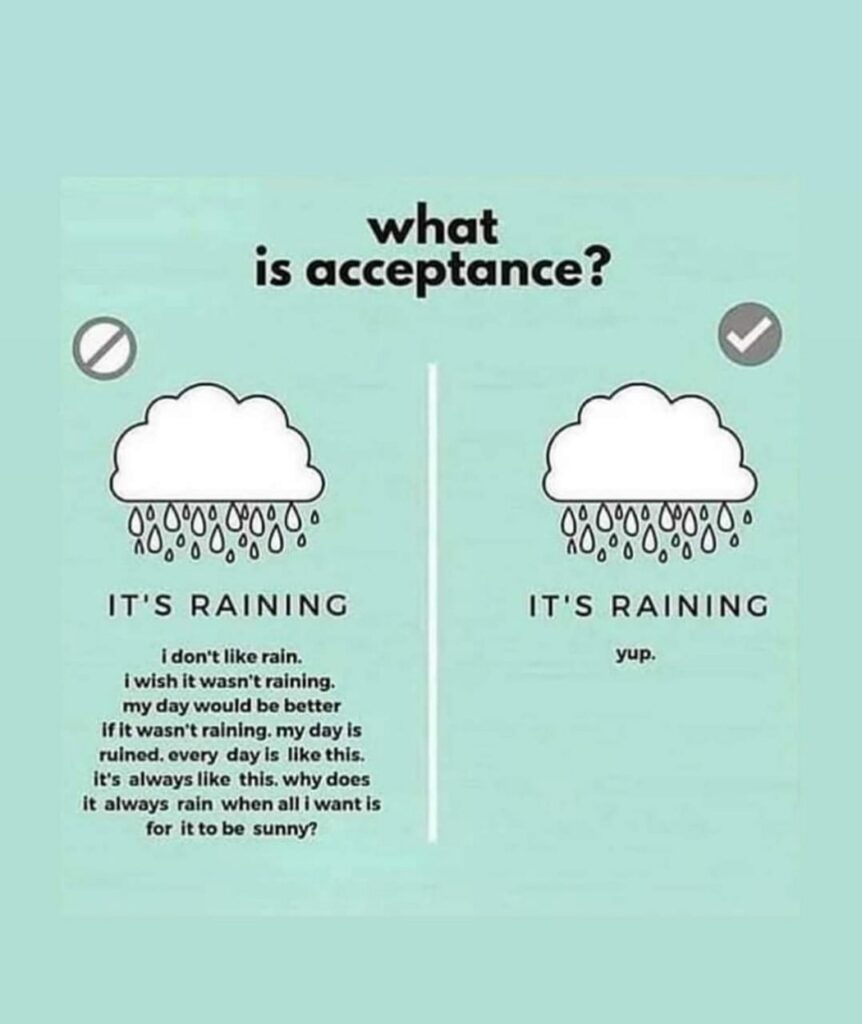Awhile back, I was hanging out with a group of friends when the conversation turned to meditation. After a few minutes of back and forth, one said they were using a meditation app that, it turned out, several other people were also using. Finally, one of my friends blurted, “I like meditating, but every time I try I keep thinking thoughts! I suck at it, so I quit.”
I teach a Yoga and Mindfulness class for middle schoolers. The kiddos and I intently practice the nuts and bolts of breathing as a way to “notice” the other things happening in our minds, our bodies and around us. “When you become aware of any thoughts, or if your mind starts to wander–” I quietly explain, “notice it, acknowledge and accept that it’s happening.” “Then, let those thoughts disappear.” (I tell them to visualize those intruding thoughts as bubbles popping.)
The thing is…our brains are thought-making machines! So, even if you’ve been practicing focused meditation for some time, your noodle often invades the inner journey abroad you’re crafting with musings about lunch, how you think your fourth period lesson will go, or worst of all, YOU’LL GET A SONG STUCK IN YOUR HEAD! But, we dutifully return to the breath. Apparently, though, these unwanted mental gremlins can frustrate and even infuriate the most intelligent, level-headed, and well-intentioned people into giving up the practice altogether.
About halfway through the year, I share this picture with the class as part of an explicit introduction to self-awareness:

What is the “golden ticket” of meditation? There are so many well-documented physical and mental health benefits. Could acceptance actually be number one?
One of my biggest classroom challenges is getting students to feel comfortable making mistakes in front of their peers. Seriously, though, it’s a skill that many of us adults are still working on! I spend acres of headspace (and a few dollars!) on the physical classroom environment. We spend hours collaborating to build our safe space. We connect deeply to the idea that 80% of gamers hit the reset button after “making a mistake”, because those “lessons” are the only way to grow any skill. In the end, however, too many of my students’ past traumatic experiences and the resulting anxiety mean that so much valuable sharing is lost to the entire group. About mid-year, I was reminded of the meditation conversation I’d had previously and the Serenity Prayer (which is such a valuable part of the successful healing process used by Alcoholics Anonymous):
“…grant me the serenity to accept the things I cannot change,
The courage to change the things I can,
And the wisdom to know the difference.”
I zeroed in on acceptance. Two of the students that had the most difficulty earlier in the year with some of the asanas and other focus exercises volunteered to make a video to help share yoga with some of their younger schoolmates (I teach in a K-8 school). I set up a camera and they got right to work teaching their peers, boo-boos and all! It was really beautiful watching their confidence grow alongside their courage!
Two weeks later, I asked the class to journal about something that they’d been struggling with, but their mindful practice was allowing them to accept. When I asked if anyone wished to share out loud, one tall, athletic eighth grade boy who from day one made it very clear to all of us that he didn’t sign up for the class (the schedule changes required to move him elsewhere didn’t work for him either) turned toward me slowly and raised his hand. He was strong and a highly-skilled basketball player who didn’t need what Yoga and Mindfulness class had to offer. However, in a hushed and deliberate tone, the young man shared that he had come to accept that he couldn’t change the situation, and was determined to make the best of it for the remainder of the year…! My face drew a large grin and I hopped over and gave him a fist-bump.
It’s hard to choose a number-one outcome when the menu includes lowered blood pressure, increased focus, reduced anxiety, etc. Creating regular opportunities for them to learn to accept those wayward thoughts may, however, transfer to conscious action, allowing them to collaborate with more compassion and less judgment. A few moments of focused meditation in the regular classroom could also allow them to be more patient with themselves as they grapple with new skills.
What do you think? Do you use meditation in your classroom? Please share your thoughts and comments below.

One Response